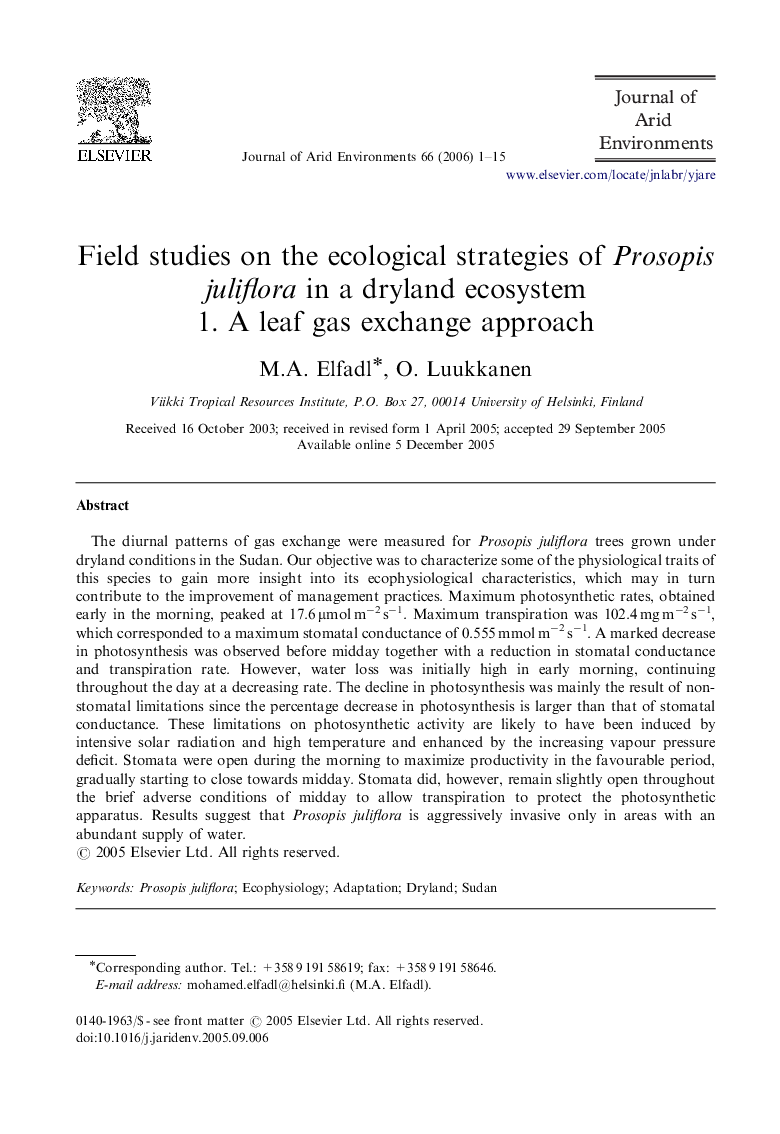| Article ID | Journal | Published Year | Pages | File Type |
|---|---|---|---|---|
| 4394680 | Journal of Arid Environments | 2006 | 15 Pages |
Abstract
The diurnal patterns of gas exchange were measured for Prosopis juliflora trees grown under dryland conditions in the Sudan. Our objective was to characterize some of the physiological traits of this species to gain more insight into its ecophysiological characteristics, which may in turn contribute to the improvement of management practices. Maximum photosynthetic rates, obtained early in the morning, peaked at 17.6 μmol mâ2 sâ1. Maximum transpiration was 102.4 mg mâ2 sâ1, which corresponded to a maximum stomatal conductance of 0.555 mmol mâ2 sâ1. A marked decrease in photosynthesis was observed before midday together with a reduction in stomatal conductance and transpiration rate. However, water loss was initially high in early morning, continuing throughout the day at a decreasing rate. The decline in photosynthesis was mainly the result of non-stomatal limitations since the percentage decrease in photosynthesis is larger than that of stomatal conductance. These limitations on photosynthetic activity are likely to have been induced by intensive solar radiation and high temperature and enhanced by the increasing vapour pressure deficit. Stomata were open during the morning to maximize productivity in the favourable period, gradually starting to close towards midday. Stomata did, however, remain slightly open throughout the brief adverse conditions of midday to allow transpiration to protect the photosynthetic apparatus. Results suggest that Prosopis juliflora is aggressively invasive only in areas with an abundant supply of water.
Related Topics
Physical Sciences and Engineering
Earth and Planetary Sciences
Earth-Surface Processes
Authors
M.A. Elfadl, O. Luukkanen,
